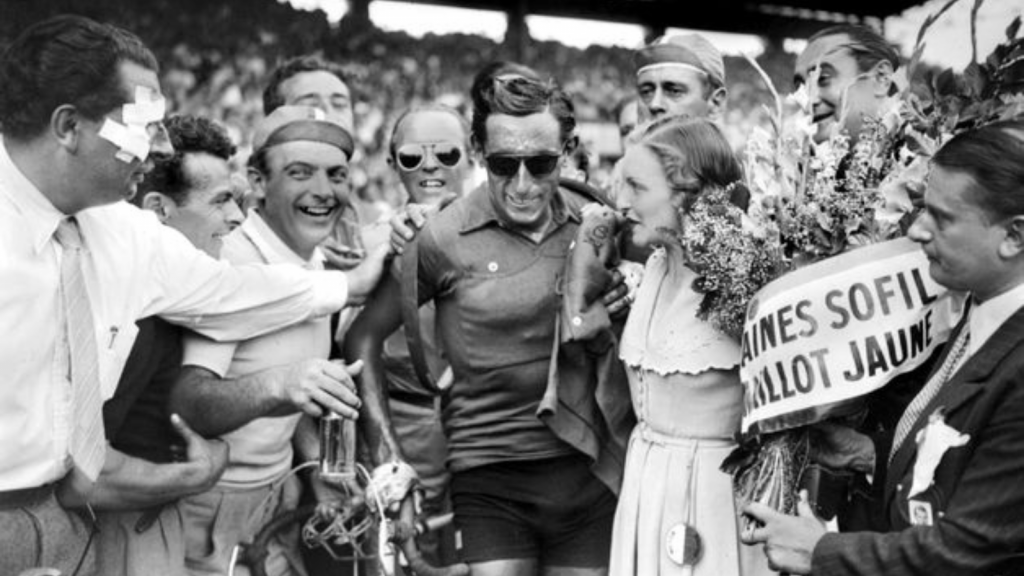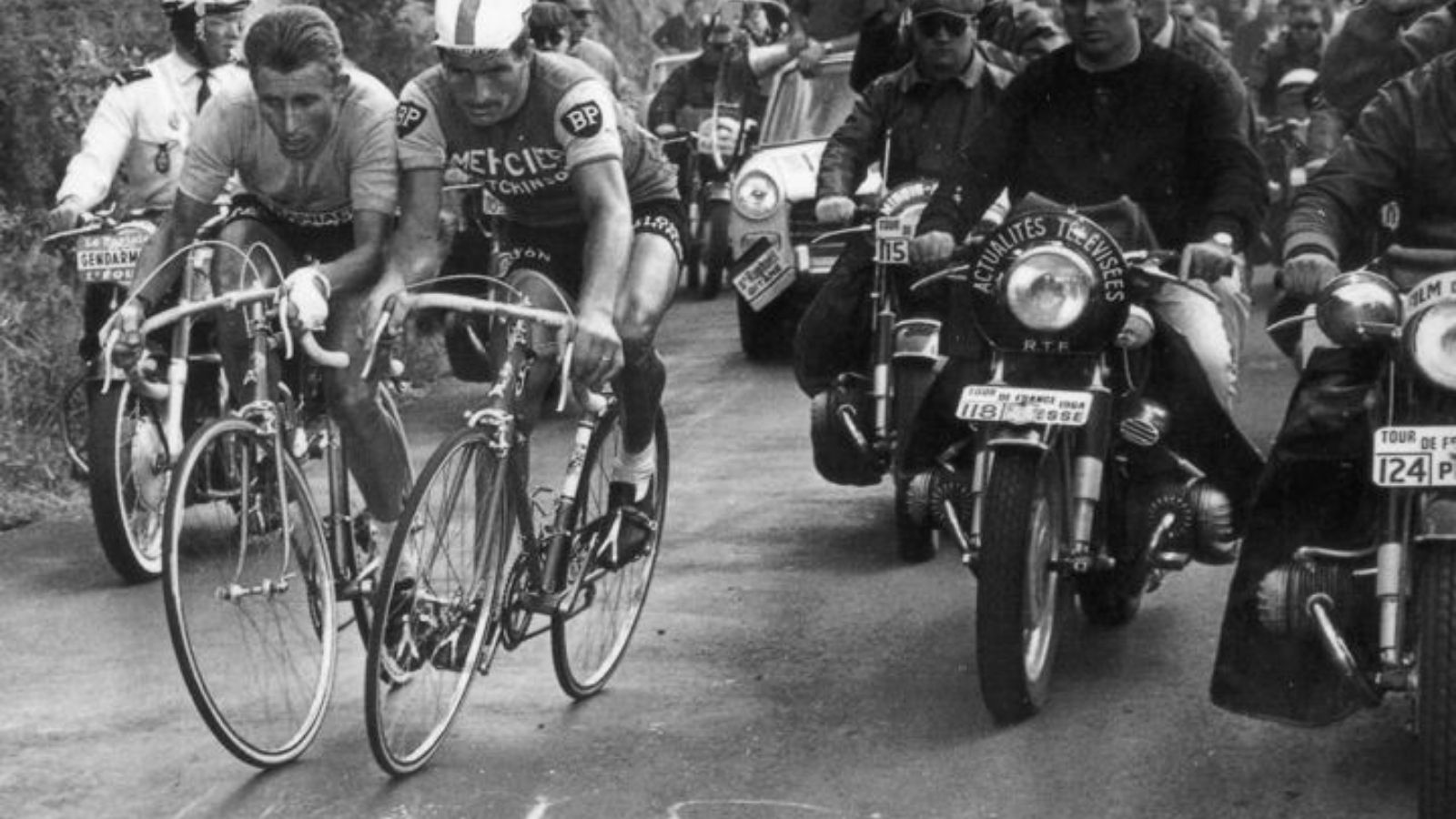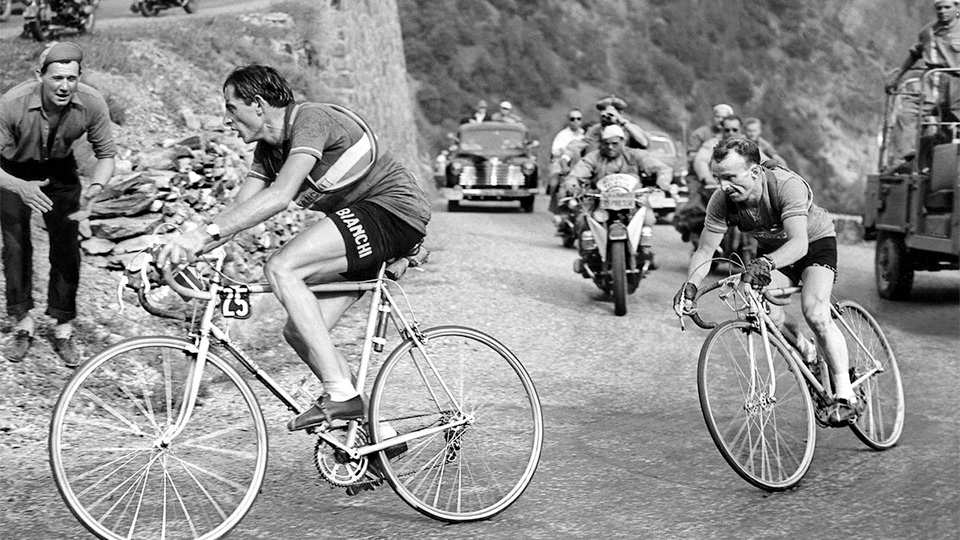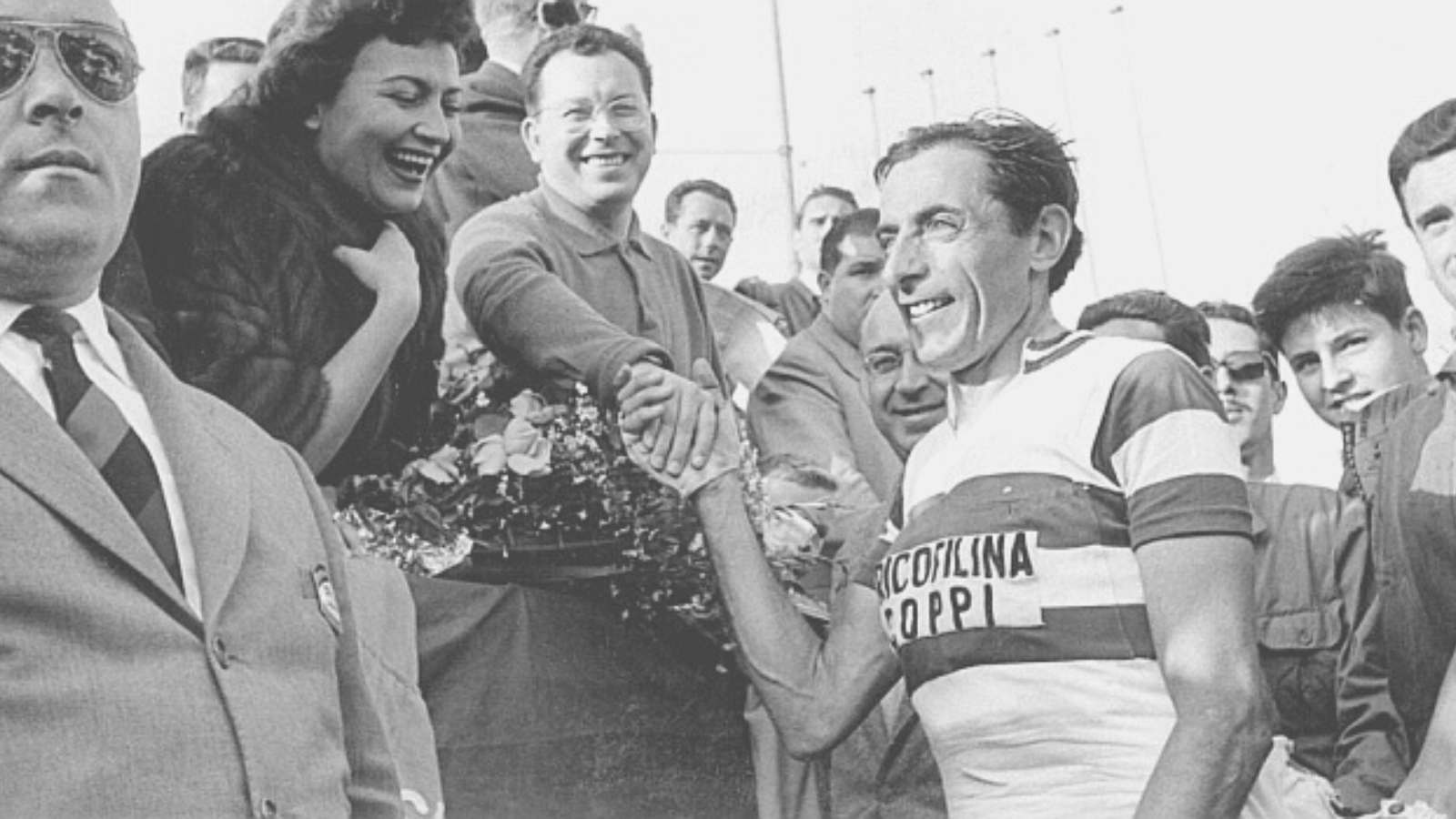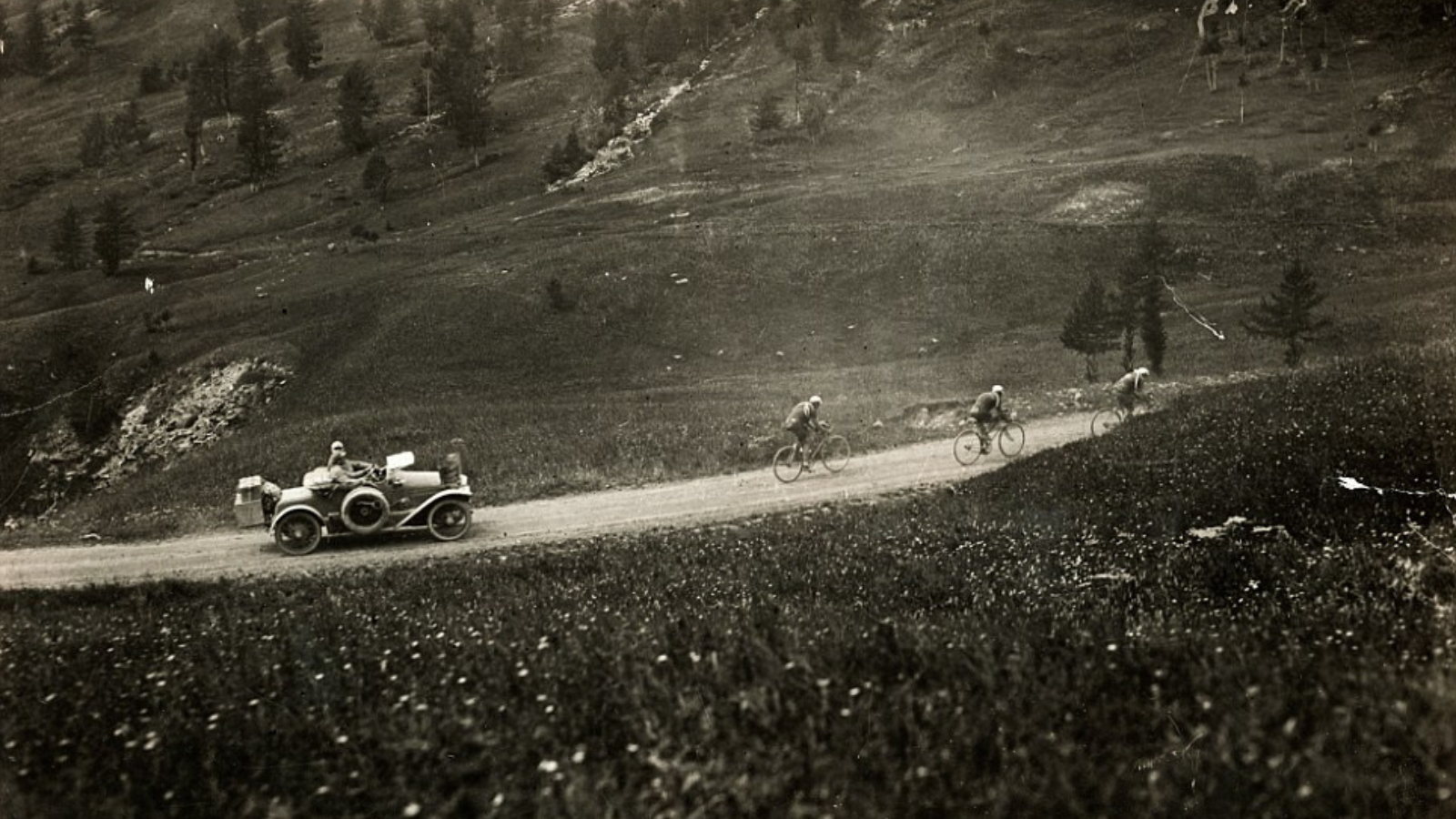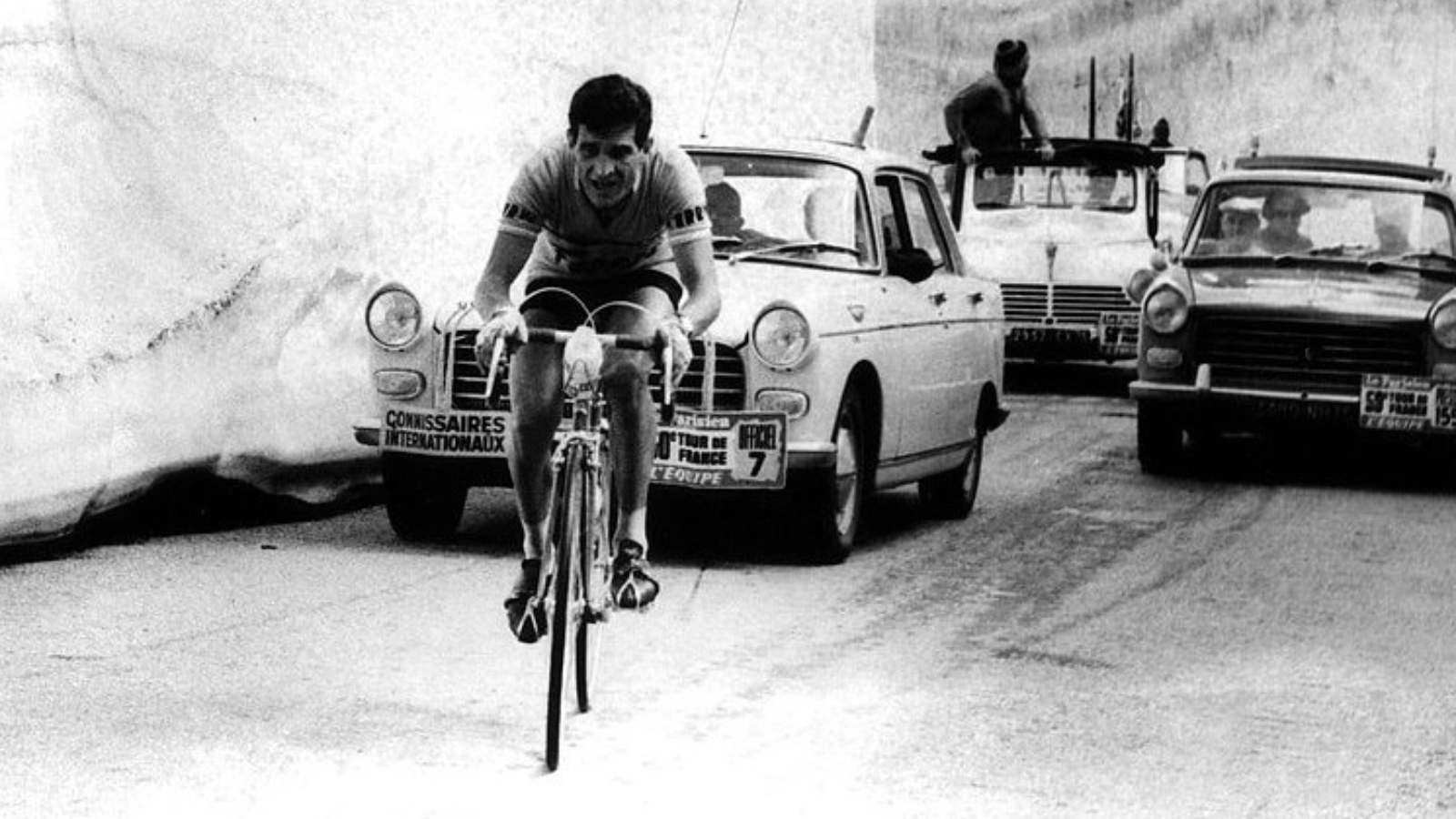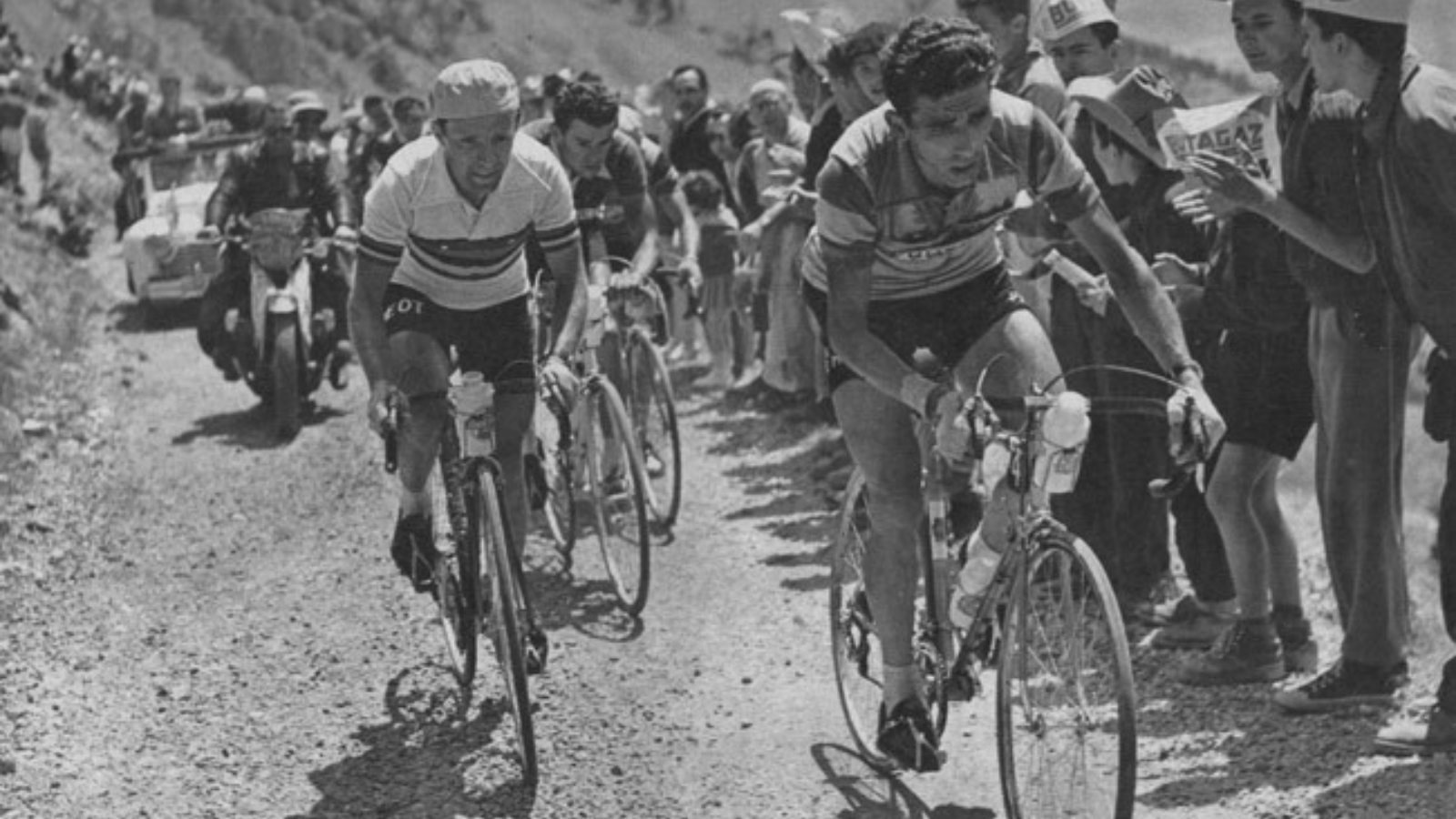It might sound unbelievable, but Fausto Coppi, the third Campionissio of the Italian cycling, one of the greatest legends of the sport
rode Tour de France only 3 times.
From our rather nostalgic point of view it appears as a longer period. But no. It happened only three times between 1949 and 1952. So big is his impact on road cycling history.
Let's see the most important infos about the Tour de France editions Fausto Coppi competed.
Tour de France 1949
Many consider the race in 1949 the best Tour de France ever.
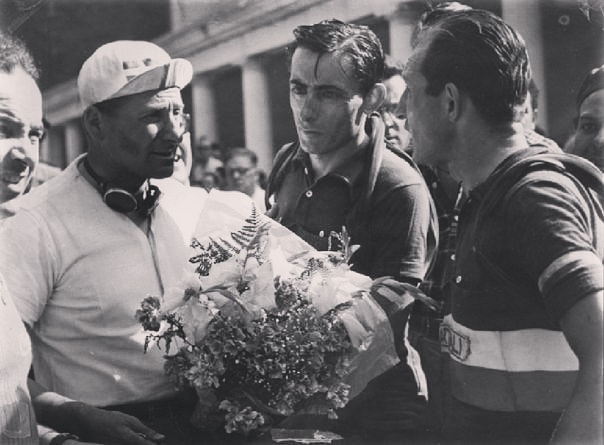
A few weeks earlier, Coppi already won the Giro d'Italia and was prepearing for the first Giro-Tour double victory ever. It wasn't an easy ride, not only for him but also for his teammates, especially Gino Bartali. Team manager Alfredo Binda (another great cycling legend on his own, also the second Campionissimo of Italian cycling) had to exploit all his diplomatic skills to make the Italian team working.
In the end, Coppi won the race and became the first cyclist ever to win Giro d'Italia and Tour de France in the same year.
Lists of Giro - Tour double winners >>
Tour de France 1951
This was the year of Hugo Koblet's surprise overall victory. The Swiss rider managed to finish a more than 100 km long solo ride in the 11 stage. All the favourites, including Fausto Coppi, Louison Bobet, Raphaël Geminiani, Gino Bartali, Fiorenzo Magni miscalculated his action.
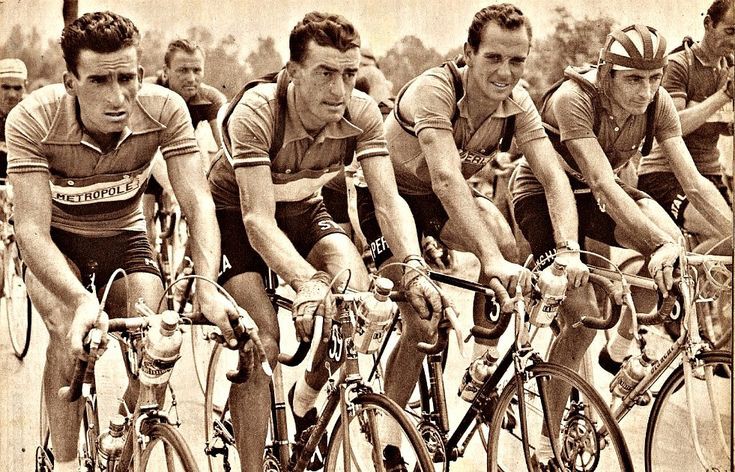
Obviously, after the sudden death of his brother, Serse, Fausto Coppi had other thoughts in his mind. One of the reasons of his (relatively) poor performance (10th place in the GC), was that he was burried deep in his grieving. On the other hand, his teribble day in the saddle in the 14th stage happened rather due a food poisoning.
Tour de France 1952
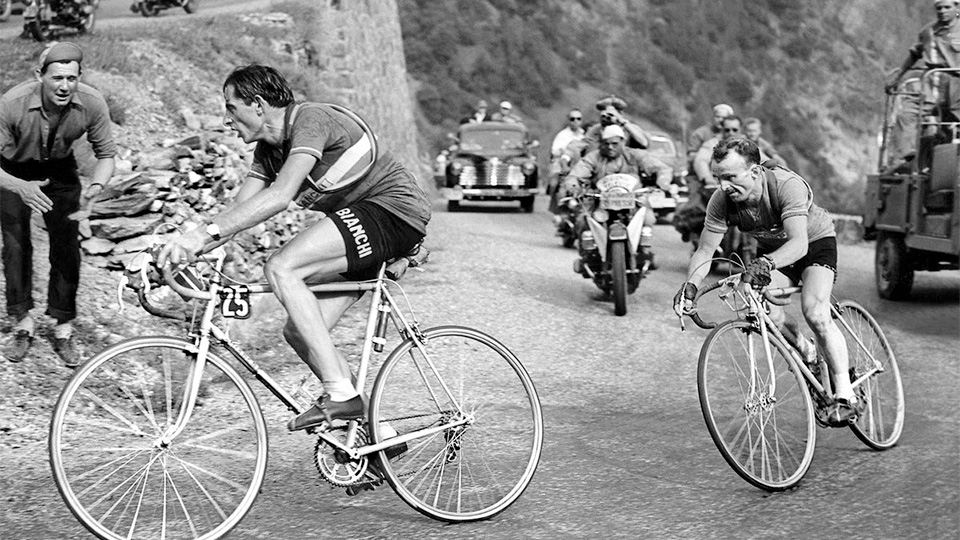
Fauto Coppi was so dominant at Tour de France 1952, that the organizers had to double the prize money for the 2nd place for making the competition exciting again.
He was great not only in the general classification, but won all the three hilltop finishes of the race, making him first conquerer of both Alpe d'Huez and Puy de Dôme. (The third moutain top was in Sestriére, although a famous place in the history of Tour de France, yet not a legendary ascent)
More about Puy de Dôme first time at Tour de France >>
5 iconic Alpe d'Huez moments >>
Alpe d'Huez, the instant classic >>
MORE FAUSTO COPPI
Puy de Dôme (Iconic places #2)
Tour de France 2023 presented a great gift for every road cycling history fans: after 35 years Puy de Dôme was reintroduced to the race. Although the 9th stage of Tour de France 2023 was only the 14th appearance of the ascent, it became one of the most iconic places in the history road cycling … Read more
Fausto Coppi and the Tour de France
It might sound unbelievable, but Fausto Coppi, the third Campionissio of the Italian cycling, one of the greatest legends of the sport rode Tour de France only 3 times. From our rather nostalgic point of view it appears as a longer period. But no. It happened only three times between 1949 and 1952. So big … Read more
Alpe d’Huez, the instant classic
There is a simple reason, why Alpe d’Huez was introduced to the Tour de France only in 1952, while the race visited the Alps since 1911 frequently: there is only one way up to the top, hence the stage must be finished there. But the concept of a hilltop finish wasn’t born yet. Indeed, the … Read more
Fausto Coppi and the Vuelta a España
Unlike the other two grand tours with a history started before the first world war, the first Vuelta a Espana was held in 1935. It was a spring race until the 1990s, right before (or sometimes almost at the same time as) the Giro d’Italia. Also, for almost two decades, it was really unpredictable, when … Read more
MKRE TOUR DE FRANCE IN THE ALPS
Climbing Col d’Allos at Tour de France 1914 -Vintage cycling image of the day
Tour de France 1914 started on the same day, 28th June, as the Austro-Hungarian Archduke Franz Ferdinand and his wife, Sophie, Duchess of Hohenberg were assassinated in Sarajevo. When the riders lined up in the middle of the nigh for the start of the first stage in Paris, they knew nothing about that this day … Read more
Fernando Manzaneque on the Col d’Iseran (Tour de France 1963)
Snow at the Tour de France? Yes, it happens sometimes, especially, when the race visits such high places like Col d’Iseran in the Alps. In the 16th stage of Tour de France 1963, the peloton visited the Alps. It was a 202 km long stage between Grenoble and Val d’Isere, including Col de la Croix … Read more
Tour de France visits Turin (Tour de France 1956)
Although the first ever Italian Grand Depart of Tour de France will take place in 2024, the race visited Italy for plenty of times, usually during mountain stages in the Alps. Turin is one of the most visited Italian cities by Tour de France. In 1956, peloton made a trip to the place in 17th … Read more
Alpe d’Huez, the instant classic
There is a simple reason, why Alpe d’Huez was introduced to the Tour de France only in 1952, while the race visited the Alps since 1911 frequently: there is only one way up to the top, hence the stage must be finished there. But the concept of a hilltop finish wasn’t born yet. Indeed, the … Read more
